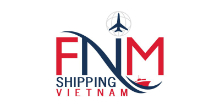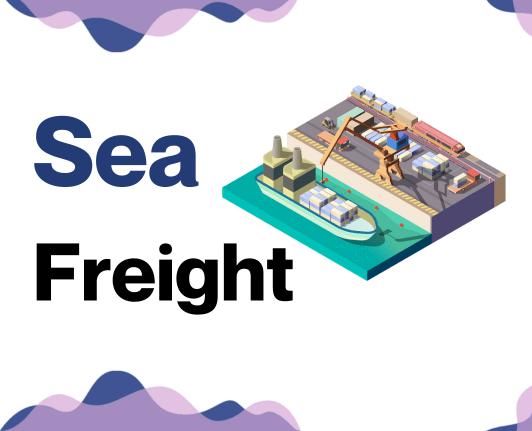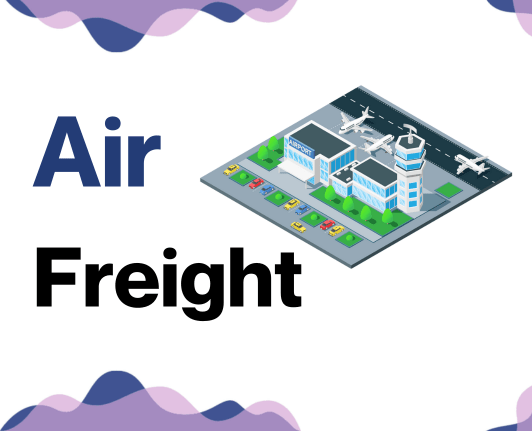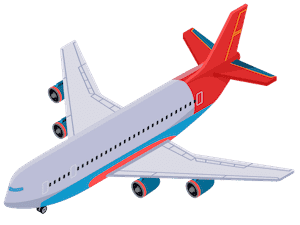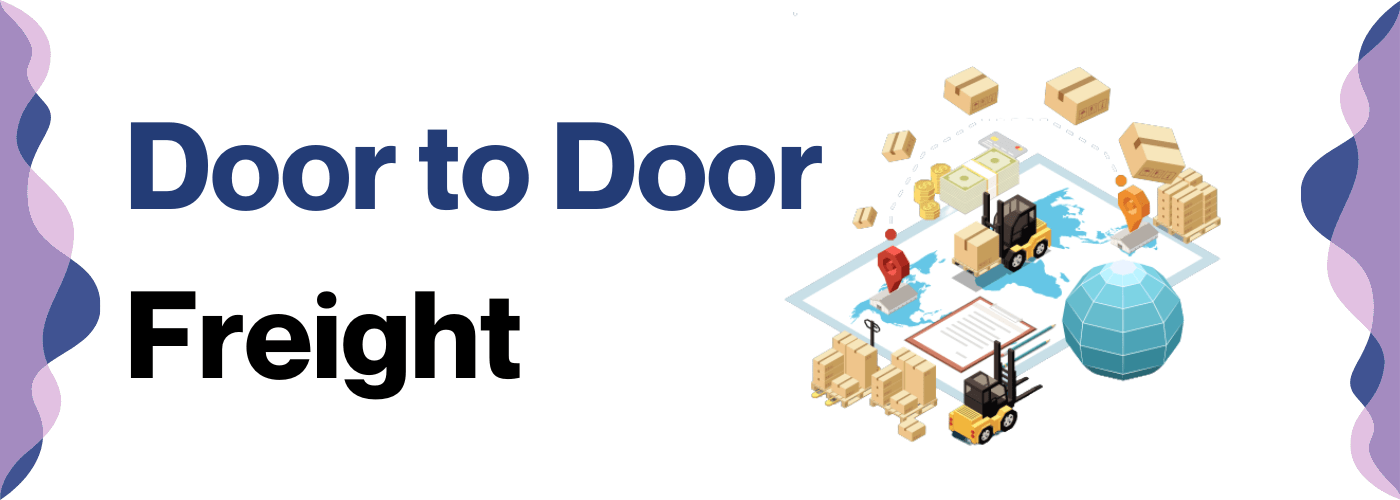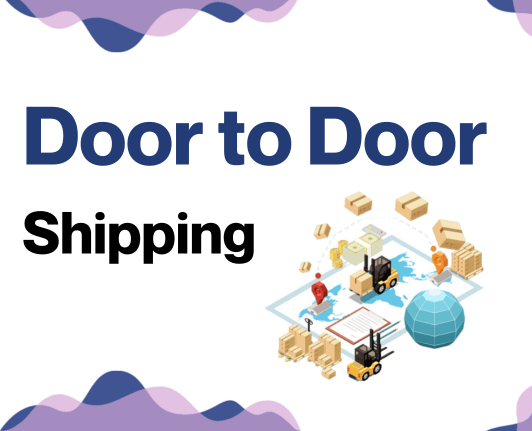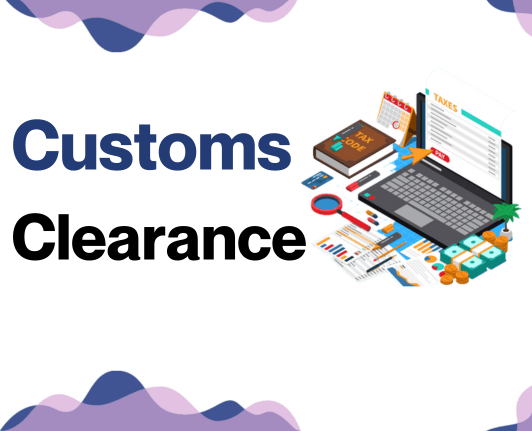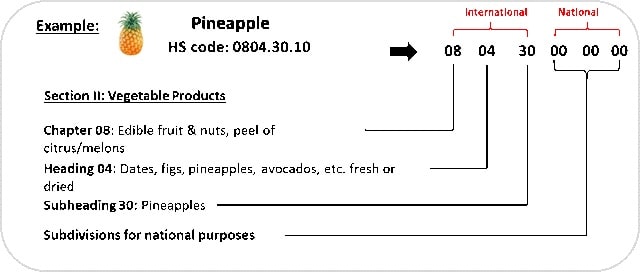Ever thought about shipping a reindeer from Vietnam to Norway? Well, you're in the right place if you're trying to ship anything less exotic, too. From daunting numbers about rates to figuring out transit times and complying with customs regulations, businesses often encounter multiple hurdles. In this guide, we will demystify these issues and help you understand the ins and outs of different shipping methods, customs procedures, duties, taxes, and provide business-specific advice. Whether it's about leveraging air freight's speedy delivery or optimizing cost with sea freight, we've got you covered. If the process still feels overwhelming, let FNM Vietnam handle it for you! We turn shipping challenges into success stories for businesses, taking care of the logistics from start to finish.
Summary
Which are the different modes of transportation between Vietnam and Norway?
Journeying from Vietnam to Norway is quite a trek - roughly 8,000 kilometers as the crow flies. Imagine a marathon runner covering this distance - it would take some serious considerations and preparations.
Geographically, several countries lie between these two nations which could add obstacles if you're thinking about road or rail. So, we're left with options that can cross borders with ease: air or ocean.
These options can suit varied needs, from swift deliveries to managing heavy goods. Getting your choice right is like putting the suitable shoes on our marathon runner – different needs, different shoes.
How can FNM Vietnam help?
Need to ship goods between Vietnam and Norway? Let FNM Vietnam handle the complexities. We'll manage every aspect, from customs to transport, ensuring your cargo reaches its destination smoothly. Why wrestle with logistics? Reach out for a free estimate in under 24 hours. Got a question? Our skilled consultants are just a phone call away!
FNM Vietnam Tip: Sea freight might be the best solution for you if:
- You're moving big loads or large items. Sea freight offers roomy, cost-effective solutions.
- Your shipment isn't time-critical. Ocean routes take longer but are often more reliable.
- Your supply chain links major ports, tapping into a broad network of sea lanes.
Sea freight between Vietnam and Norway
Ocean shipping between Vietnam's bustling freight hubs and Norway's lucrative markets is an integral part of their trade relationship. The cargo hubs of Ho Chi Minh and Hanoi connect seamlessly with Oslo and Bergen, vital centers for Norway's industry. Although sea freight on this route is slower than air or rail, it's a budget-friendly solution for shipping large volumes, like furniture or machinery.
However, the journey between these nations isn't always smooth sailing - and it's not just about the waves. Shippers often meet stumbling blocks that turn straightforward shipments into intricate puzzles. Complicated customs clearances, unexpected duties, or even container choice mistakes are common challenges faced.
In this guide, we'll act as your trusty compass, guiding you around these potential shipping snares. So, whether you're a seasoned shipper seeking a new route or a business newbie about to make your maiden voyage, we'll provide the insights to help your cargo conquer the course from Vietnam to Norway.
Main shipping ports in Vietnam
Port of Ho Chi Minh City
Location and Volume: Situated in Southeast Vietnam, the Port of Ho Chi Minh City is the country's largest maritime shipping hub. It handles over 6 million TEUs annually, making it a crucial gateway for global trade.
Key Trading Partners and Strategic Importance: Its key trading partners encompass China, Japan, the U.S., and Singapore. The port is especially critical in facilitating foreign trade due to its links with over 300 ports worldwide.
Context for Businesses: If you're seeking a fast route to global markets, the Port of Ho Chi Minh City offers robust connections, and its extensive size ensures scalability for growing businesses.
Port of Hai Phong
Location and Volume: Located in Northern Vietnam, the Port of Hai Phong is the second-largest port in the country, handling approximately 2.5 million TEUs every year.
Key Trading Partners and Strategic Importance: The port exchanges goods mainly with partners such as China, South Korea, and Malaysia. Critically, its strategic northern location makes it an effective link to the landlocked areas in Laos.
Context for Businesses: Looking to reach customers in the northern region or neighboring countries? The Port of Hai Phong could be an essential part of your strategy, given its land-based connections and proximity to other key markets.
Port of Da Nang
Location and Volume: The Port of Da Nang, positioned in Central Vietnam, processes about 1.1 million TEUs annually, serving as the primary port for the Central and Central Highlands area.
Key Trading Partners and Strategic Importance: This port's chief trading partners are countries like China, Japan, the U.S., and Australia. Its central location is integral to shipping routes connecting the East Sea to the Pacific Ocean.
Context for Businesses: If trade in Central Vietnam is part of your plan, the Port of Da Nang, with its strategic position, provides excellent regional access.
Port of Quy Nhon
Location and Volume: Situated in South Central Coast Vietnam, the Port of Quy Nhon processes over 927,000 TEUs per year.
Key Trading Partners and Strategic Importance: Key trading partnership happens mainly with ASEAN countries, China, and Japan. The port's strategic location renders it a preferred choice for cargo in transit to Cambodia and Laos.
Context for Businesses: If reaching inland markets is a key component of your business plan, the Port of Quy Nhon's positioning and connectivity presents a clear-cut advantage.
Port of Can Tho
Location and Volume: Located on the Hau River, the Port of Can Tho handles approximately 7 million tons of cargo annually. Its position connects the Mekong Delta to the South China Sea.
Key Trading Partners and Strategic Importance: The port regularly conducts trade with Indonesia, Malaysia, and Thai businesses, amongst others. It's of significant importance due to its role in serving the Mekong Delta, Vietnam's 'rice bowl'.
Context for Businesses: Companies aiming for an efficient route to Mekong Delta will find the Port of Can Tho perfectly suits their logistics needs, given its strategic position and strong regional influence.
Port of Vung Tau
Location and Volume: The Port of Vung Tau, based in Southern Vietnam, serves as a key bulk and cargo port, processing over 35 million tons of cargo each year.
Key Trading Partners and Strategic Importance: Trading partners include China, South Korea, and Japan. Moreover, the port's closeness to the industrial zones in the South makes it strategically important.
Context for Businesses: If your goods are destined to or originating from the southern industrial zones, the Port of Vung Tau could be crucial in your shipping itinerary due to its advantageous location and substantial cargo handling abilities.
Main shipping ports in Norway
Port of Oslo
Location and Volume: Found in the heart of Norway's capital, Oslo, this port is a critical hub for the country's sea trade. It handles over 6 million tons of goods annually, making it Norway's busiest in terms of shipping volume.
Key Trading Partners and Strategic Importance: The Port of Oslo enjoys active trade relationships with numerous countries, including key partners like Germany, the Netherlands, UK, and Sweden. It's also the major gateway for Norway's import and export of vehicles, cementing its strategic importance in the country's economy.
Context for Businesses: If you're considering expanding into the European market, particularly in the aforementioned countries, the Port of Oslo might present a valuable strategic advantage. Its robust infrastructural capabilities, coupled with its high shipping volume, potentially facilitate easier access to these markets.
Port of Bergen
Location and Volume: Situated in the scenic city of Bergen, this port plays a pivotal role in the city's economic activities. It boasts an annual cargo throughput volume that reaches nearly 1.5 million tons.
Key Trading Partners and Strategic Importance: The Port of Bergen has a valuable trade alliance with many North Sea countries, improving accessibility for businesses. Its oil and gas industries also contribute significantly to the city's GDP.
Context for Businesses: The Port of Bergen may be of interest to businesses looking to exploit rich oil and gas reserves. Its formidable trade relationships can lay a sturdy foundation for your oil and gas business expansion needs.
Port of Trondheim
Location and Volume: Located in Trondheim, the third-largest city in Norway, this port handles over 1.5 million tons of cargo annually.
Key Trading Partners and Strategic Importance: The Port of Trondheim mainly trades with countries in the European Union, facilitating the seamless transport of forest products, minerals, and general cargo.
Context for Businesses: If your business involves forestry products or minerals, the Port of Trondheim might be a key port to consider. Its steady traffic of these kinds of goods presents an excellent opportunity for growth and expansion.
Port of Narvik
Location and Volume: Nestled in the northern part of Norway, the Port of Narvik transports approximately 17 million tons of goods per year, ranking it as one of Norway's leading ports in terms of volume.
Key Trading Partners and Strategic Importance: The port is instrumental in Norway’s trade with various countries, particularly with Russia for its iron ore transport.
Context for Businesses: If your business involves the trade of iron ore or heavy materials, the Port of Narvik might be your go-to option given its strategic connections and high volume efficiency.
Moholmen Container Harbor
Location and Volume: Positioned in Mo i Rana, this port is the logistics hub of central Norway. Though smaller in volume, it is crucial for the reefer market and bulk cargo.
Key Trading Partners and Strategic Importance: It has established strong partnership relationships with many European countries, making it a crucial logistics point for diverse industries.
Context for Businesses: If your business is centered around the reefer market or mobile refrigeration, Moholmen Container Harbor could be a suitable option, given its specialty in these areas.
Port of Stavanger
Location and Volume: Located on the western coast of Norway, the Port of Stavanger is the third-largest port in the country. It handles an annual cargo volume of approximately 10 million tons.
Key Trading Partners and Strategic Importance: Its strategic location grants easy access to international shipping routes, making it a vibrant trading hub with partners mainly in the UK and the EU.
Context for Businesses: Its strong links with the UK market and its strategic coastal location make the Port of Stavanger a potentially attractive option for businesses aiming to tap into the British or European markets.
Should I choose FCL or LCL when shipping between Vietnam and Norway?
Deciding between Full Container Load (FCL) and Less than Container Load (LCL)—also known as consolidation—is your critical first port of call in streamlining your sea journey from Vietnam to Norway.
Your choice not only dictates cost and delivery time, but it's also the compass guiding your shipment's success. So, anchors aweigh!
In the following section, we'll unveil the differences and shed light on the optimum option tailored to your shipping goals. Stay onboard and get ready to steer your cargo with confidence and precision.
LCL: Less than Container Load
Definition: LCL (Less than Container Load) freight refers to a shipment that is not large enough to fill a standard-sized shipping container. It's ideal for low-volume shipments and entails cargo from multiple consignors consolidated into one container.
When to Use: You should opt for LCL shipment when your volume of goods is less than 13/14/15 CBM. It offers flexibility for low-volume shippers and shipping cost savings as you only pay for the space your freight occupies.
Example: Suppose you're a furniture manufacturer in Vietnam shipping 10 CBM of chairs to a buyer in Norway. LCL would be an excellent option to consider as your shipment is less than a full container's load.
Cost Implications: While LCL freight tends to have a higher cost per unit than Full Container Load, it can be more cost-effective for smaller shipments since you are not purchasing an entire container. It's crucial to get an LCL shipping quote upfront to ensure it aligns with your budget and doesn't lead to unforeseen expenses in your supply chain.
FCL: Full Container Load
Definition: FCL (Full Container Load) shipping is a method where a container is exclusively dedicated to a single shipment. This method provides a secure environment for your cargo as it is sealed from origin to destination, maintaining its safety and integrity.
When to Use: FCL is recommended when the cargo volume exceeds 13/14/15 CBM. This is generally a more cost-efficient choice for high volume shipments, leveraging the full potential of a standard 20'ft or 40'ft FCL container.
Example: Imagine you're a furniture manufacturer in Vietnam shipping a bulk order of chairs to a retailer in Norway. Due to the high volume, you opt for FCL shipping ensuring both safety and a more cost-efficient fcl shipping quote.
Cost Implications: With FCL, you pay a flat rate for the entire fcl container, making it typically cheaper for large cargo volumes. It could include port handling charges, customs fees and potentially lower insurance rates due to the reduced risk of damage. However, you need to factor in storage and demurrage fees in case of delays at the ports. It's advisable to ask for a comprehensive quote considering these factors to get the total cost of your shipment.
Say goodbye to shipping headaches!
With many factors to consider when shipping between Vietnam and Norway, selecting between consolidation or a full container can be a daunting task. FNM Vietnam, your trusted freight forwarder, is here to simplify the process. Our ocean freight experts assess your cargo size, budget, and time sensitivity to guide you to the best shipping solution. Don't ship in the dark. Get a free, no-obligation estimate now. Challenge the complexities and let FNM Vietnam make your cargo shipping hassle-free.
How long does sea freight take between Vietnam and Norway?
Shipping from Vietnam to Norway by sea freight typically takes an average of 40 days. However, this estimated transit time is subject to factors like the specific ports of departure and arrival, the weight, and the type of goods being transported.
For further precision based on your specific needs, it's beneficial to contact a freight forwarder such as FNM Vietnam for a bespoke quote.
Transit Times Between Key Vietnamese and Norwegian Ports:
| Vietnam Ports | Norway Ports | Average Transit Time (Days) |
| Port of Hai Phong | Port of Oslo | 43 |
| Port of Da Nang | Port of Oslo | 39 |
| Port of Hai Phong | Port of Bergen | 40 |
| Port of Da Nang | Port of Bergen | 41 |
*Note: Transit times above are just averages and can fluctuate based on a multitude of factors.
How much does it cost to ship a container between Vietnam and Norway?
Ocean freight offers an effective solution when shipping containers from Vietnam to Norway; however, predicting an exact cost can be challenging.
Rates per cubic meter (CBM) can broadly range due to various factors - the carrier chosen, the nature of your goods, and the specific points of loading and destination. Plus, monthly market fluctuations could impact the shipping cost.
Rest assured, our team of experienced shipping specialists will be with you every step of the way. We assess and quote on a case-by-case basis, ensuring we offer the most competitive and suitable ocean freight rates tailored to your unique needs.
Special transportation services
Out of Gauge (OOG) Container
Definition: An Out of Gauge (OOG) container refers to freight that exceeds the standard measurements of a container in height, length, or width.
Suitable for: Goods that don’t fit in standard containers due to their oversized dimensions.
Examples: Machinery, wind turbine blades, or construction materials.
Why it might be the best choice for you: The OOG container method ensures that your out of gauge cargo arrives in Norway from Vietnam securely, despite irregular dimensions.
Break Bulk
Definition: This involves the shipping of goods as separate, uncontainerized pieces, often on a pallet or in a crate.
Suitable for: Large goods that cannot be broken down into smaller units or divided into batches.
Examples: Construction equipment, timber, or steel beams.
Why it might be the best choice for you: Break bulk shipping provides flexibility, facilitating the shipment of unconventional goods as loose cargo load.
Dry Bulk
Definition: Dry bulk refers to the transportation of goods in large quantities, loaded directly into the ship’s hold.
Suitable for: Commodities that are in loose form or dry such as coal, grain, or sand.
Examples: Rice exports from Vietnam to Norway, or mineral fertilizer imports from Norway to Vietnam.
Why it might be the best choice for you: Dry bulk shipping can cut transportation costs significantly when shipping large quantities of commodities.
Roll-on/Roll-off (Ro-Ro)
Definition: Roll-on/Roll-off (Ro-ro) vessels are ships with built-in ramps that allow vehicles to be loaded and unloaded by driving them on and off board.
Suitable for: Automobiles, trucks, heavy machinery, or any wheeled cargo that can be rolled onto the ro-ro vessel.
Examples: Shipping new cars or trucks from Vietnam to Norway, or heavy construction machinery either way.
Why it might be the best choice for you: Ro-ro shipping provides an efficient and safe way for the transportation of vehicles or heavy machinery, eliminating the need for disassembly.
Reefer Containers
Definition: Reefer containers are refrigerated containers used for shipping temperature-sensitive goods.
Suitable for: Food, pharmaceuticals, or other types of products that require controlled temperature.
Examples: Seafood exports from Norway to Vietnam or tropical fruit exports from Vietnam to Norway.
Why it might be the best choice for you: Reefer containers maintain an optimal climate within the container from point of origin to destination, ensuring the quality of your products upon arrival.
As an expert in international logistics, FNM Vietnam is here to guide you through the best shipping methods that cater to your specific needs.
Contact us for a free shipping quote in less than 24 hours, and together, let's build your business's shipping strategy.
FNM Vietnam Tip: Air freight might be the best solution for you if:
- You're on a tight schedule. Air freight delivers speed unmatched by other modes.
- Your cargo is under 2 CBM, a good fit for air's smaller capacity.
- Your destination is off the usual routes, making air's global network a key asset.
Air freight between Vietnam and Norway
Speed, reliability, and cost-effectiveness make air freight a preferred choice for transporting small, high-value shipments from Vietnam to Norway. Imagine those exclusive silk garments or intricate lacquerware: high-value items that start to lose their value if they take ages to reach their destination. Air freight can get these prized goods to Norway in a fraction of the time it would take by sea.
But here's the catch—many shippers trip up on the nuances of air freight, burning holes in their pockets. It’s like feverishly doing a difficult maths problem, but using the wrong formula—frustrating, right? Some overpay, not realizing that air freight uses a unique weight calculation based on both actual and volumetric weight. Others wind up paying high penalties just because they aren't aware of or miss following the best practices for air freight.
Just like you wouldn't dive into uncharted waters without a map, why ship without understanding all the ins-and-outs? Stick with us as we unpack all you need to know about air freight from Vietnam to Norway. Be prepared, not surprised!
Air Cargo vs Express Air Freight: How should I ship?
Looking to transport goods swiftly from Vietnam to Norway? We know it’s both about getting there fast and within budget. You've got options: air cargo, where goods ride alongside other shipments in an airline, or express air freight, a pardon-my-dust fast service using dedicated planes.
In this guide, we'll walk you through the pros and cons of each to help you nail that ideal shipping solution.
This quick and dirty comparison is the first step to make an informed decision. Let's dive in!
Should I choose Air Cargo between Vietnam and Norway?
If you're shipping mid-to-heavy cargo between Vietnam and Norway, air freight with carriers like Vietnam Airlines or Norwegian Air is an excellent choice. These global airlines offer dependable schedules but remember, transit times could be longer due to fixed flight schedules.
Although it might not be the cheapest option, their cost-effectiveness and trustworthiness increase with goods above 100/150kg (220/330lbs).
So, if you're focused on reliability over rush, air cargo might be your best match.
Should I choose Express Air Freight between Vietnam and Norway?
Express air freight, a service utilizing cargo-only planes, is a standout choice when you have smaller shipments not exceeding 1 CBM or 100/150 kg (220/330 lbs).
If rapid delivery and parcel safety are your top concerns, then well-known international couriers like FedEx, UPS, or DHL might be your best bet. They provide extensive tracking, reliable timelines, and guaranteed delivery windows.
So, if you're shipping from Vietnam to Norway, this could be the optimal solution for your business.
Main international airports in Vietnam
Tan Son Nhat International Airport
Cargo Volume: Boasting the largest cargo handling capacity in the country, Tan Son Nhat handles over 700,000 tonnes of cargo per year.
Key Trading Partners: Works closely with major global markets such as China, Japan, and the USA, handling goods ranging from electronics to clothing and food items.
Strategic Importance: Located in Ho Chi Minh City, Vietnam's economic hub. Its location enables it to serve as the main gateway for goods entering and leaving southern Vietnam.
Notable Features: Comprehensive cargo services with both a domestic cargo terminal and an international cargo terminal, coupled with modern cargo handling equipment.
For Your Business: With its excellent facilities and strategic location, Tan Son Nhat matches businesses that aim to reach consumers in southern Vietnam and beyond swiftly and efficiently.
Noi Bai International Airport
Cargo Volume: Managed 708,580 tonnes of cargo in 2023, being the second-busiest cargo airport in the country.
Key Trading Partners: Regularly handles goods traded with Europe, the USA, and Australia. Significant volumes of textiles, machinery, and agriculture products pass through here.
Strategic Importance: Situated near Hanoi in northern Vietnam, it plays a pivotal role in connecting businesses with northern areas of the country and further with China.
Notable Features: Operates both an international cargo terminal and a domestic one. Capable of handling wide-body freight aircraft.
For Your Business: Noi Bai Airport can be an advantageous choice if your business is focused on reaching the northern Vietnamese market or looking for an entry point to China.
Da Nang International Airport
Cargo Volume: Handled about 100,000 metric tons of cargo per year, mainly focusing on smaller volumes of high-demand goods.
Key Trading Partners: Key trade routes include Singapore, Thailand, and South Korea.
Strategic Importance: Found in the middle of the country, it makes for a convenient hub for goods due to its central route between northern and southern Vietnam.
Notable Features: Equipped with modern cargo facilities, having both a domestic and an international cargo terminal.
For Your Business: Da Nang Airport is the right choice if your business caters to the central Vietnamese market or if you are seeking a waypoint between north and south Vietnam.
The information offered should help businesses make an informed decision when planning their shipping strategy. With details about each airport's cargo volume, key trading partners, strategic importance, notable features, and relevance for their business, you are equipped to choose the airport that best fits your plan to expand or maintain your business in Vietnam.
Main international airports in Norway
Oslo Airport Gardermoen
Cargo Volume: Over 185,000 tonnes annually.
Key Trading Partners: Predominantly the US, China, and neighboring European countries.
Strategic Importance: As the largest airport in Norway, it serves as a major Northern European hub.
Notable Features: Offers direct cargo flights to Chicago, a cold storage facility for pharmaceuticals, and a cargo terminal recently upgraded for modern digital capabilities.
For Your Business: Given its extensive network, you can efficiently move goods globally, while the advanced infrastructure helps improve cargo transit times and ensures safe delivery of sensitive goods.
Bergen Airport Flesland
Cargo Volume: Handles over 12,000 tonnes annually.
Key Trading Partners: Primarily European countries, including the UK, Netherlands, and Germany.
Strategic Importance: Serves as an essential hub for the export of seafood, especially salmon, from Norway.
Notable Features: Has a dedicated perishable center for seafood ensuring a quick turnaround and preservation of product quality.
For Your Business: If your operations involve seafood or perishable goods, the airport's special facilities will ensure quick and efficient transport while maintaining product quality.
Stavanger Airport Sola
Cargo Volume: Transports over 18,000 tonnes of cargo annually.
Key Trading Partners: Major exports to European countries including the UK, France, and Germany.
Strategic Importance: Ideal for businesses operating in the southwestern region of Norway.
Notable Features: It offers special cargo-handling facilities for oversized and heavy consignments.
For Your Business: If you regularly ship bulky equipment or oversized goods, Stavanger Airport's specialized handling can expedite and simplify your shipping processes.
Tromsø Airport Langnes
Cargo Volume: Processing over 2,500 tonnes annually.
Key Trading Partners: Russia, Finland, and other European countries.
Strategic Importance: It serves as the primary airport for Northern Norway, and it's a critical link to Russia and Northern Europe.
Notable Features: Well-equipped to manage extreme weather conditions, ensuring robust goods handling in harsh climates.
For Your Business: Its resilient services ensure that even in severe Norwegian winters, your cargo will reach its destination as planned, avoiding delays and ensuring reliable delivery.
Trondheim Airport Værnes
Cargo Volume: Handles over 2,000 tonnes annually.
Key Trading Partners: Mostly European countries, particularly the UK, Germany, and the Netherlands.
Strategic Importance: Located centrally in Norway, it is vital for companies operating in the middle of the country.
Notable Features: Facilities to handle general cargo, mail, and various commodities.
For Your Business: Its central location can greatly reduce transit times for shipments to and from central Norway. Its versatile facilities can accommodate a range of cargo types, improving your shipping efficiency.
How long does air freight take between Vietnam and Norway?
Typically, air freight between Vietnam and Norway averages around 3-6 days. However, it's essential to note that this time frame isn't fixed. Specific airports, the weight of your shipment, and the nature of the goods you're transporting can all affect transit times significantly. For an accurate estimation tailored to your unique shipping needs, it's recommended to consult with an experienced freight forwarder like FNM Vietnam.
How much does it cost to ship a parcel between Vietnam and Norway with air freight?
Air freight shipping rates between Vietnam and Norway can broadly average around $3 to $10 per kg. However, it's vital to understand these are quite relative, influenced by numerous factors like proximity to departure and arrival airports, packet dimensions, weight, and type of goods.
Hence, pinning an exact figure can be a challenge. But don't sweat it, we're here to help! Our experts analyze each shipment individually to provide the most cost-effective solutions. So, let's talk specifics – we welcome the opportunity to work out the best rates tailored for your needs.
Reach out to us and get a free, no-obligation quote in less than 24 hours. Make your move now!
What is the difference between volumetric and gross weight?
Gross weight is the actual weight of your shipment, including packaging and pallets. In contrast, volumetric weight, also known as dimensional weight, is a calculated weight based on the size of your package, irrespective of its actual weight.
In air cargo shipping, gross weight is measured using scales and is straightforward. It's simply the total weight of your package or shipment in kilograms. For instance, if you're shipping a box of wooden toys weighing 20kg, that's your gross weight.
Calculating volumetric weight, on the other hand, requires a little more effort. Essentially, you measure the three dimensions of your package (length, width, and height) in centimeters, then multiply them together and divide by 6000. For example, if you have a box that is 50cm long, 50cm wide, and 50cm high - you multiply these values together to get 125,000 cubic cm. Dividing this by 6000, you get a volumetric weight of approximately 20.83 kg (approximately 45.95 lbs).
In express air freight services, the calculation is similar, but the divisor is different. For express services, you divide by 5000 instead of 6000. So, for the same box, you'd get a volumetric weight of 25 kg (approximately 55.12 lbs).
These weight calculations are pivotal as your freight charges are based on whichever weight (gross or volumetric) is higher. This ensures you're charged accurately for both the weight and space your shipment takes up on the aircraft.
FNM Vietnam Tip: Door to Door might be the best solution for you if:
- You seek hassle-free shipping. Door-to-door manages the entire process for you.
- You like one go-to contact. A dedicated agent oversees your door-to-door shipment.
- You aim to limit cargo handling. Fewer transitions mean less risk of damage or loss.
Door to door between Vietnam and Norway
Navigating the route from Vietnam to Norway, door-to-door shipping is a comprehensive service that takes your goods from pick-up to delivery points, eliminating intermediary handling. Perfect for those who value simplicity and efficiency, it offers a streamlined, stress-free shipping experience. Ready to learn more about swift, seamless transfers across continents? Let's dive in!
Overview – Door to Door
Streamlining your shipping from Vietnam to Norway? Opt for Door to Door service - the ultimate stress-free logistics solution.
As our FNM Vietnam clients can attest, confronting shipping complexities gets easier when everything from pickup, customs, to delivery gets handled by one provider. Sure, it might not be the cheapest option, but the convenience often outweighs the cost. No more grappling with customs issues, tracking multiple parties, or coordinating different stages.
It's about making your shipping experience as seamless and hassle-free as possible while avoiding common pitfalls. Now, that's practical, engaging, and approachable logistics!
Why should I use a Door to Door service between Vietnam and Norway?
Imagine saying Au Revoir to your cargo in Vietnam and the next time you see it, it's saying Hei, Hei in Norway! Now, that's the magic of Door to Door service. Let's break this down into five compelling reasons why you might fancy this service.
1. The Not-So-Boring Boardroom Talk: You're busy driving your business forward; logistic concerns aren't exactly your idea of thrilling boardroom chatter. Door to Door service reduces logistical anxiety by managing everything from picking up goods at point A to trucking them safely to point B. Less stress, more chess!
2. No More Clock Watching: Urgent shipment? Clock's ticking, friend! Door to Door services ensure speedy delivery from Vietnam to Norway, meticulously planned and executed. Guaranteed relief from the shipment waiting blues!
3. Gentle Hands for Tough Tasks: Do you have complex cargo needs? We're all about that bespoke service. No matter the shape, size, or nature of your goods, Door to Door service ensures specialized, tailored care.
4. Convenience with a Capital C: Forget juggling multiple agencies or worrying about various transit points. Door to Door service is like a logistics butler, seamlessly handling all aspects of the journey from the bustling streets of Hanoi to the calm fjords of Norway.
5. Final Destination - Not the Movie: All the trucking from Vietnam to Norway? It’s all covered in the process. You'll find the goods delivered right up to your chosen location in Norway, almost boost wrapped with convenience.
So, don't just ship - explore the convenience, assurance, and personalized touch of Door to Door service. It’s logistics done right, and done fantastically!
FNM Vietnam – Door to Door specialist between Vietnam and Norway
Experience a smooth shipping journey from Vietnam to Norway with FNM Vietnam. Entrust your freights to our experienced team's hands and have them transported, cleared through customs, and delivered right to your doorstep, all without lifting a finger.
Your dedicated Account Executive is always a call away for advice or a free quote within 24 hours. Turn complex logistics into ease. Reach out to FNM Vietnam today - we make global trading straightforward.
Customs clearance in Norway for goods imported from Vietnam
Customs clearance refers to the necessary procedures for importing goods from one country to another - in this case, Vietnam to Norway.
It's a complex process that may incur unexpected costs and fees, with potential for goods to languish in customs longer than you'd like. Understanding customs duties, taxes, quotas, and licenses is key to ensure a swift and hassle-free shipment. Throughout this guide, we'll delve into these intricate details to help you navigate this terrain.
In the meantime, FNM Vietnam stands ready to assist you. For a budgetary estimation, don't hesitate to reach out to our team with the origin of your goods, their value, and the H.S Code. These are vital data points to streamline the process.
How to calculate duties & taxes when importing from Vietnam to Norway?
Calculating customs duties when importing goods from Vietnam to Norway or any other global destination, hinges on several vital factors. These include country of origin, the Harmonized System (HS) Code, the Customs Value, the applicable tariff rate, and any additional fees or taxes leveled on the product type.
Let's start by identifying the country of origin—this refers to where your goods are actually manufactured or produced, in this case, Vietnam. This will play a significant role in how duties and taxes are calculated, as different nations have different trade agreements that can influence these costs.
Whether it's consumer electronics or traditional handicrafts, every piece of information has a role to play in determining the final cost of importing your goods from the busy ports of Ho Chi Minh City to the serene fjords of Norway.
Step 1 - Identify the Country of Origin
While it may seem obvious, recognizing Vietnam as the country of origin is a fundamental step. Here's why:
1. Trade Agreements: Vietnam and Norway are signatories to numerous trade accords. Understanding these arrangements gives you insight into potential customs duty reductions or exemptions.
2. Duty Rates: Import duties vary by origin. With Vietnam as a reference, you can accurately calculate your financial obligations.
3. Import Restrictions: Certain goods may face prohibitions or limitations. Staying aware of these restrictions ensures smooth transport.
4. Compliance: Accurate documentation prevents legal troubles. Your shipment’s country of origin is often requested.
5. Product Labelling: Certain countries require origin-specific labels. Avoid unnecessary delays by proper labelling.
Regarding the trade agreements, for instance, under the partnership and cooperation agreement (PCA) between Norway and Vietnam, a range of goods could see reduced or even zero tariffs.
Remember, verifying the country of origin like Vietnam helps streamline your import process, abiding by all Norwegian customs regulations. It's not just a tedious step in getting your HS code, but a protective measure ensuring a smooth delivery, minimizing cost, and maximizing efficiency.
Step 2 - Find the HS Code of your product
The Harmonized System (HS) of coding is a global standard used to describe items for customs procedures. This system uses codes, referred to as HS Codes, to classify products and calculate customs duties. These codes communicate important information about the product, such as what it is and where it comes from.
The simplest way to find the HS Code for your product is often simply to ask your supplier. They’re likely to have a sound understanding of their goods and the associated regulations.
However, if this route isn't open to you, no worries, we’ve got you covered. You can use the Harmonized Tariff Schedule's HS lookup tool. Start by entering the name of your product into the search bar. Next, look for the HS code listed in the Heading/Subheading column - that's the info you need.
A word of caution, though: Ensure you are choosing the correct HS Code. Accuracy in this step is imperative as incorrect codes can result in shipment delays and potential fines.
Here's an infographic showing you how to read an HS code. Make sure you familiarize yourself with it to avoid potential disruptions. Moving goods across borders doesn't have to be a daunting process, and with the right information, it becomes much easier.
Step 3 - Calculate the Customs Value
Step 3 in tackling customs clearance in Norway for your goods from Vietnam is calculating the Customs Value - an essential figure that might seem similar to your product's worth but holds a different implication. It isn't merely the price you have paid for your goods; rather, it represents the CIF (Cost, Insurance, and Freight) value, which includes the goods' price, international shipping costs, and insurance.
For instance, if your goods cost $5000, shipping is $300, and insurance is $200. Your Customs Value won’t be just the $5000, but it's a sum total - $6500.
This value is pivotal in determining how much duty you'll owe, so it's crucial to calculate it accurately, keeping all costs in USD. Always remember, the right calculations can substantially streamline your shipping journey from Vietnam to Norway.
Step 4 - Figure out the applicable Import Tariff
An import tariff is essentially a tax imposed on goods that are imported into a country. For goods imported from Vietnam to Norway, it's crucial to understand the specific tariff that applies to your product. In this case, the 'Most Favored Nation' (MFN) tariff is applied in Norway, a type of rate that guarantees non-discriminatory trading between nations.
To identify the tariff, follow these steps:
1. Use the TARIC System - European Customs to find the applicable tariff.
2. Enter the HS code you've identified earlier and Vietnam as the country of origin to check the duties and taxes applied to your product.
Let's illustrate this with an example. Assume we're importing furniture, with an HS code of 940161 (upholstered wooden seats). Entering this data into the TARIC system might indicate an MFN tariff rate of, say, 5%. To calculate the import duties, we must consider this rate along with the Cost, Insurance, and Freight (CIF) value. If the CIF value totals to $10,000, the import duties would be: 5/100 $10,000 = $500.
Remember, understanding your product's specific tariffs is essential for cost planning and regulatory compliance, ensuring a smooth import process.
Step 5 - Consider other Import Duties and Taxes
When importing goods from Vietnam to Norway, it's crucial to keep in mind that besides the standard tariff rate, other import duties may apply depending on the product type and country of origin.
For instance, an excise duty might apply to certain goods like alcohol or tobacco. If the goods are under anti-dumping legislation, additional taxes might be levied to protect local industry.
But, the most significant is the Value Added Tax (VAT). For example, if a shipment of ceramics (hypothetical, rates can vary) is valued at $10,000, with a customs duty of 5%, the entry value for VAT is $10,500 ($10,000 + $500). If the VAT rate is 25%, the total VAT will be $2,625.
Remember, these charges can dramatically affect your bottom line, so it's essential to account for them. By doing so, you'll avoid unexpected costs and ensure a smoother shipping process. Researching beforehand and consulting with an expert can give you a specific overview of these potential charges.
Step 6 - Calculate the Customs Duties
When importing goods from Vietnam to Norway, duties are an essential part of your costing to get right. The customs duty is calculated based on the customs value of your goods.
For instance, if your product's customs value is $1000 with a duty rate of 5%, your customs duty will be $50.
Value Added Tax (VAT) can also come into play. Let's say your customs value is $2000 with VAT at 25% and a customs duty of 10%. You'll first find the duty ($200), then add this to the value of the goods ($2000+$200=$2200) before then calculating the VAT. Hence, your VAT would be $550.
Finally, consider anti-dumping duties and excise duties, applicable on certain goods to safeguard local industries.
For example, if you're importing footwear worth $3000, with a duty rate of 10%, VAT of 25%, anti-dumping tax at 15%, and an excise duty of 20%. You'd first calculate the customs duty ($300), then the anti-dumping duty on ($3000+$300) 15% = $495. Add all these to the goods' value ($3000+$300+$495 = $3795) to calculate the excise duty (20% $3795= $759). The total duties payable become $1554.
It's crucial to calculate these values accurately to avoid overpaying or falling afoul of local regulatory laws. At FNM, we specialize in tackling these complexities for you, providing seamless customs clearance services everywhere. We ensure a fair computation so you won't pay more than you should.
Contact us for a free quote within 24 hours.
Does FNM Vietnam charge customs fees?
Don't worry about any hidden customs duties with FNM Vietnam! As custom brokers, we only charge for customs clearance services, not duties and taxes - those go straight to the government.
Remember, we act as your representative, sorting all paperwork and processes on your behalf. To keep things transparent, we provide you with official customs documents, ensuring you've only been charged the government-stipulated rates.
Think of it like a restaurant bill - FNM Vietnam is the service charge, while customs duties are the cost of the meal!
Contact Details for Customs Authorities
Vietnam Customs
Official name: General Department of Vietnam Customs.
Official Website: https://www.customs.gov.vn/index.jsp?ngon_ngu=en
Norway Customs
Official name: Norwegian Customs (Tollvesenet)
Official website: https://www.toll.no/en/
Required documents for customs clearance
Unraveling the maze of customs documents can muddy your shipment journey. Understanding essential papers like the Bill of Lading, Packing List, Certificate of Origin, and Documents of Conformity (CE standard) is crucial. Let's shed light on their roles to simplify your customs clearance process. Buckle up for a smoother, less stressful ride in international freight forwarding.
Bill of Lading
Navigating the sea of shipping between Vietnam and Norway? Then the Bill of Lading is your essential lifebuoy. It's a game-changer, testifying the transition of cargo ownership from seller to buyer, while serving as a contract of carriage. As important as a captain's handshake, it details your shipment specifics - without it, customs might seem as daunting as VW-X ice class waters. But here's a secret, consider using a 'telex' or electronic release. A blessing in the digital age, it fast-forwards the process by eliminating the wait for an original document, much like the AWB (Air Waybill) does for air cargo. Listen, in the Norwegian fjords of freight, going electronic can be your shortcut to a smother journey. Remember, smooth seas never made a skilled sailor, but a timely Bill of Lading just might.
Packing List
Imagine you’re shipping a bunch of Vietnamese lacquerwares to Norway. Your Packing List is a key part of that journey. It's your chance to detail every item in your shipment, from the number of pieces to weight, dimensions, or even serial numbers. Make sure you get it right, whether you're using sea or air freight! Customs officers in both Vietnam and Norway will use this document to verify the contents of your cargo. Incorrect or incomplete details might lead to delays or even fines. Picture it like giving directions – the clearer and more accurate you are, the smoother the journey. Get more peace of mind by keeping your Packing List exact and up-to-date.
Commercial Invoice
When shipping goods from Vietnam to Norway, your Commercial Invoice is a key player. Reflecting the pact between buyer and seller, it not only details product specifics like the HS code, description, and unit price, but also carries tax implications.
For seamless customs clearance, it’s crucial that every detail aligns with those in your Packing List or Bill of Lading. Picture this - a mismatch in the cargo weight mentioned here and on your Bill of Lading can stall your freight at the Vietnam port, causing unnecessary delay and cost.
To avoid such logistical nightmares, double-check everything, right down to your terms of delivery (Incoterms). Remember, a well-drafted Commercial Invoice keeps the customs officials in both countries happy and your shipment on schedule.
Certificate of Origin
If you're shipping goods from Vietnam to Norway, don't overlook the Certificate of Origin (CoO).
This critical document verifies where your goods are manufactured. Being factual here can lead to substantial savings, as it may allow you to qualify for preferential customs duty rates under trade agreements. For instance, let's say you're shipping handheld electronic gadgets made in Vietnam. By including a CoO, you might enjoy lower duty rates, making your goods more competitive in the Norwegian market.
Bottom line? Never underestimate the impact of a correctly filled out Certificate of Origin. It's your key to smoother, more cost-effective shipments.
Certificate of Conformity (CE standard)
For shipping goods from Vietnam to Norway, your products need to carry a Certificate of Conformity (CoC), ensuring they adhere to the European CE standard, crucial in this European market.
Unlike general quality assurance, CE marking states that your product meets high safety, health, and environmental protection standards set by the European Economic Area (EEA). Essentially, it's your product's passport into Europe, including Norway. It differs from the American equivalent, where compliance with US standards is asserted through voluntary product testing and certification.
To streamline your shipping process, before exporting, ascertain whether your product requires CE marking and ensure compliance. It's a proactive step that could save you re-exporting headaches down the line.
Your EORI number (Economic Operator Registration Identification)
For streamlined shipping between Vietnam and Norway, an EORI number is a non-negotiable requirement.
The EORI (Economic Operator Registration Identification) acts like a passport for your goods, providing a unique identifier that traces your import and export activity within the EU. Securing your EORI is a simple registration process that carries heavy weight, as missing it can lead to delayed shipments or fines. Think of it as a barcode that's visible to customs departments, giving transparency and speed to your operations.
Be sure to apply for your EORI via your country's customs website before your goods set sail. Now, let's get those goods on the way!
Get Started with FNM Vietnam
Untangling the complex web of international customs can be daunting. At FNM Vietnam, we decrypt the regulations, ensuring a seamless navigation through the customs clearance maze. We handle each step of the process, providing a smooth shipping experience between Vietnam and Norway. Don't navigate this path alone. Contact us today for a no-strings-attached quote, delivered to your inbox within 24 hours. Your logistics simplified with us.
Prohibited and Restricted items when importing into Norway
Keeping your cargo compliant can feel tricky, especially when importing into Norway. There's a list of restricted or forbidden items you need to know, to stave off unwelcome surprises like delays or fines. Let's clear that up.
Restricted Products
- Alcohol: You must obtain a Spirits and Wine Products import license from the Norwegian Alcohol and Drug Research Institute.
- Tobacco Products: A special license is required to import tobacco. You can get this from the Norwegian Directorate of Health.
- Pharmaceuticals: For importing medicine, you need permission from the Norwegian Medicines Agency.
- Plants & Seeds: You're going to need a Phytosanitary Certificate from the Norwegian Food Safety Authority.
- Pets & Animal Products: Get hold of an import permit from the Norwegian Food Safety Authority.
- Firearms and Ammo: Obtain a permit from the Norwegian Police Authority.
Remember, all these requirements are susceptible to changes. It's always a great idea to double-check right before your shipment. Happy shipping!
Prohibited products
- Narcotics and dangerous drugs
- Weapons and ammunition, without special permission
- Explosives and pyrotechnics material
- Products containing CFCs (Chlorofluorocarbon), HCFCs (Hydrochlorofluorocarbons), and HFCs (Hydrofluorocarbons), used in refrigeration, and aerosols
- Endangered species of flora and fauna, products made of such species according to CITES (Convention on International Trade in Endangered Species) regulations
- Unsafe and hazardous chemical substances
- Plants for planting without a phytosanitary certificate
- Meat and dairy products from non-EU countries
- Counterfeit goods and forged currency
- Indecent and obscene articles, publications, video, and other media
- Any product infringing upon intellectual property rights
- Playing cards
- Certain types of radio transmission equipment
- Certain cultural artifacts
Are there any trade agreements between Vietnam and Norway
Indeed, there's a Free Trade Agreement in place between Vietnam and the EFTA states (Iceland, Liechtenstein, Norway, and Switzerland). This FTA can be a game-changer for your shipping plans, potentially reducing or eliminating duties on many goods. Additionally, ongoing initiatives such as Norway's active participation in the ASEAN Norway Business Council signal upcoming opportunities for more streamlined trade between the two nations. Keep an eye on such developments to reap maximum advantages for your business shipping needs.
Vietnam - Norway trade and economic relationship
Over the years, Vietnam and Norway have nurtured a dynamic economic relationship. From Norway's early recognition of Vietnam in 1971, to today's blossoming bilateral ties, the partnership continues to grow. Key sectors such as aquaculture, hydropower, and shipbuilding have notably elevated their trade relationship. Vietnam exports commodities like textiles, footwear, and coffee while importing machinery, chemicals, and fish from Norway. Investment flow between them is on the rise, hinting at a promising future. In 2022 alone, bilateral trade volume stood at a billion dollars, marking an increase of 18.8% from 2021. About 70 Norwegian companies have also established a foothold in Vietnam. As a tapestry of history, shared goals, and economic synergies unfolds, the Vietnam-Norway partnership solidifies, unlocking a world of trading possibilities.
Your Next Step with FNM Vietnam
Streamline your Vietnam-Norway shipping with FNM expertise! Bypass complexities of customs clearance, save time, and dodge costly errors. Achieve seamless shipping across air, sea, road, or rail. Export or import, first-timer or seasoned, we're fit for all. Reach out now for a smooth transport experience!
Additional logistics services
Dive into FNM Vietnam's all-inclusive suite! Besides shipping and customs, discover how we ease supply chain hurdles, propelling your business effortlessly from point A to B. Seamless logistics, just a click away!
Warehousing and storage
Finding reliable warehousing in Vietnam for your goods bound for Norway can test your patience, especially when you've got temperature-sensitive items. Imagine a batch of your special Scandinavian fish oil supplements growing rancid in a hot warehouse - a real nightmare! Don't sweat it though, as we've got you covered with optimal storage solutions. For all the details, hit up our dedicated page: Warehousing.
Packaging and repackaging
When shipping from Vietnam to Norway, you'll find that smart packaging is key. It preserves your shipment’s integrity from door-to-door. It's crucial to partner with a reliable agent who understands the nuances of packaging different items - think ceramics versus electronics! This service perfectly caters to your specific product needs. More info on our dedicated page: Freight packaging.
Cargo insurance
When you're moving goods thousands of miles, cargo insurance is a must. It's not fire insurance; it safeguards against transport risks. Imagine your container accidentally topples overboard during a storm, or your goods are damaged in transit. These incidents are where cargo insurance steps in, covering you against such unforeseen circumstances. Pursue prevention over cure and mitigate potential risks with proper coverage. Visit our dedicated page for more info: Cargo Insurance.
Supplier Management (Sourcing)
Looking to outsource production? FNM Vietnam can be your ideal partner, finding suppliers in Asia, East Europe, and beyond to streamline your procurement process. From bridging language gaps to guiding you through the intricate steps of sourcing, we make your journey smooth. Real-life example: Think bags designed in Oslo, seamlessly produced in Hanoi. Make this reality with us. More info on our dedicated page: Sourcing services.
Personal effects shipping
Are you moving precious items between Vietnam and Norway? Our Personal Effects Shipping specializes in handling those prized possessions with utmost diligence. Ever tried squeezing your grandma's antique clock into suitcases? Think no more. We handle bulky or fragile items, ensuring they traverse the miles intact and on time. For a stress-free move, visit our Shipping Personal Belongings page.
Quality Control
When shipping from Vietnam to Norway, quality inspections are your invisible guiding hand, ensuring your goods meet the rigorous Northern European standards. These checks can spot discrepancies like subpar product assembly or incorrect labeling, preventing costly hiccups in your delivery pipeline. For instance, suppose you're exporting custom wooden furniture, an inspection could ensure each piece is up to par, avoiding potential import refusals in Norway. Enhanced precision and peace of mind? That's quality control. More info on our dedicated page: Quality Inspection.
Product compliance services
Moving goods across borders means abiding by both hosts of regulations. Our Product Compliance Services smooth this road for businesses, offering lab tests to certify adherence to destination-specific rules. Think of those uniquely Scandinavian safety standards your widgets must meet, and rest easy knowing we’ve got it under control.
FAQ | For 1st-time importers between Vietnam and Norway
What is the necessary paperwork during shipping between Vietnam and Norway?
When shipping from Vietnam to Norway, we handle all key paperwork on your behalf. The essential document is the bill of lading for sea freight or air waybill for air freight. For us to support you effectively, it's crucial you provide us with the packing list and the commercial invoice. Depending on the nature of your goods, additional documents like Material Safety Data Sheets (MSDS) or any specified certifications may be required. Ensuring that all these paperwork is in order helps facilitate a smooth shipping process and can prevent unnecessary delays or issues with customs.
Do I need a customs broker while importing in Norway?
Yes, engaging a customs broker when importing goods into Norway is widely recommended due to the complexity of the process and the detailed documentation required. As FNM Vietnam, we understand these requirements inside out, and are readily equipped to handle them on your behalf. In most cases, we represent your cargo at customs, ensuring that everything runs smoothly and all mandatory requirements are professionally met. Working with us helps streamline the process, saves time, and greatly reduces the possibility of errors that might result in delays or additional costs. In summary, a customs broker is a key player in your logistics chain when importing goods into Norway.
Can air freight be cheaper than sea freight between Vietnam and Norway?
We appreciate your curiosity. Determining whether air freight can indeed be more economical than sea freight between Vietnam and Norway isn't straightforward. Factors such as shipment route, weight, and volume significantly influence the cost. Generally, for cargo of less than 1.5 Cubic Meters or 300 kg (660 lbs), air freight becomes an attractive choice. At FNM Vietnam, our dedicated account executives strive to provide you with the most cost-effective and suitable options tailored to your individual needs. It's our way of ensuring you get the best value every time.
Do I need to pay insurance while importing my goods to Norway?
At FNM Vietnam, we advise that while insurance isn't a requisite for shipping goods, including to Norway, it's definitely in your best interest to insure your goods. The journey your shipment takes from one place to another can be filled with various incidents leading to potential damage, loss, or even theft. By securing insurance, you give your goods an added layer of protection. It's about providing peace of mind and safeguarding your investment. Even though it's not obligatory, it's highly recommended. Better to be safe than sorry, after all.
What is the cheapest way to ship to Norway from Vietnam?
Given the considerable distance between Vietnam and Norway, sea freight is often the most cost-effective option. We at FNM Vietnam suggest leveraging the ocean trade routes via container shipping for large, less time-sensitive consignments. Alternatively, for smaller parcels, consolidating shipments by air could reduce costs, albeit taking faster transit times into account. Always be aware, though, that each freight entails its own set of customs fees, import duties, and taxes.
EXW, FOB, or CIF?
Choosing between EXW, FOB, or CIF quite heavily depends on the relationship you have with your supplier. However, it's important to note that suppliers often aren't logistics professionals, which is where we can step in. By involving us, FNM Vietnam, you can ensure your international freight and the process at destination is expertly handled. Frequently, suppliers sell under EXW or FOB terms, covering charges from their factory or including all local charges until the origin terminal, respectively. Regardless of the terms, rest assured that we provide comprehensive, door-to-door service for your convenience.
Goods have arrived at my port in Norway, how do I get them delivered to the final destination?
When your goods reach Norway's port, if they're under CIF/CFR incoterms, you need a customs broker or freight forwarder to clear the goods, handle import charges, and oversee the final delivery. Alternatively, we at FNM Vietnam can manage the process using DAP incoterms, covering everything for you. Please consult with your dedicated account executive at FNM Vietnam to verify these details.
Does your quotation include all cost?
At FNM Vietnam, we ensure total transparency in our quotes. Included in your quote are all costs except for duties and taxes at the destination. If you wish to get an estimate on these, your dedicated account executive is always ready to assist. Rest assured, we don't have hidden fees, so surprises are off the table.
